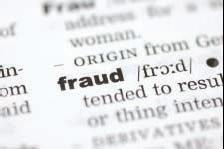
Worldwide, there has been a significant switch in retirement planning from “defined benefit plans” (where the company is in charge of investing and providing for retirement funds) to “defined contribution plans” like 401(k)s (where the employee is in charge of his or her own investments). With these changes, however, comes greater opportunity for abuse. Recent headlines reveal that some of the world’s most sophisticated investors were duped by Bernard Madoff, the New York City investment advisor accused of running a decades-long $50 billion classic Ponzi scheme. Ponzi schemes are not the only danger facing investors as they take charge of their own portfolios. We have some advice to help you avoid becoming a victim of any investment scam.
Check the record.
An investment advisor gives advice about what securities to buy and sell. A broker is an intermediary who executes customer trades. These distinctions are important because professionals have different responsibilities under various federal and state regulations and industry guidelines. A good place to start the search for a financial professional is with referrals from people you know and trust, provided it is the first, but not the last step. You must do some homework.
 The Financial Industry Regulatory Authority (FINRA) has a fairly easy web site (www.finra.org/investors/index.htm), that you can use to check the history of registered brokers Most states, including Ohio, will provide a complete written background report, including registrations, customer complaints and any disciplinary action. Ask for a complete CRD (central registration depository) report in Ohio by linking to the record request section at www.com.ohio.gov/secu/. It will be sent to you by mail or e-mail. The main document in a registration of an investment advisor is a Form ADV that can be obtained from a state’s securities regulator (e.g., Ohio Division of Securities) or by linking to the broker and advisor check page at www.sec.gov or to the North American Securities Administrators Association (www.nasaa.org). The Form ADV should clearly spell out the details of the relationship, and the advisor is required to give this form to customers before entering into any contract. If your advisor does not give you this document or hesitates in any fashion when requested, investigate further. You might also ask if your advisor is a member of the National Association of Personal Financial Advisor(www.napfa.org), which is a trade organization of fee-only registered financial advisors who sign an oath to maintain the highest levels of competency and to put their fiduciary obligation to their client above all others.
The Financial Industry Regulatory Authority (FINRA) has a fairly easy web site (www.finra.org/investors/index.htm), that you can use to check the history of registered brokers Most states, including Ohio, will provide a complete written background report, including registrations, customer complaints and any disciplinary action. Ask for a complete CRD (central registration depository) report in Ohio by linking to the record request section at www.com.ohio.gov/secu/. It will be sent to you by mail or e-mail. The main document in a registration of an investment advisor is a Form ADV that can be obtained from a state’s securities regulator (e.g., Ohio Division of Securities) or by linking to the broker and advisor check page at www.sec.gov or to the North American Securities Administrators Association (www.nasaa.org). The Form ADV should clearly spell out the details of the relationship, and the advisor is required to give this form to customers before entering into any contract. If your advisor does not give you this document or hesitates in any fashion when requested, investigate further. You might also ask if your advisor is a member of the National Association of Personal Financial Advisor(www.napfa.org), which is a trade organization of fee-only registered financial advisors who sign an oath to maintain the highest levels of competency and to put their fiduciary obligation to their client above all others.
Make sure you have an independent, regulated financial custodian and credible accountants.
Whoever manages your portfolio should be using an independent financial institution, known as a custodian, to hold the assets. When a company such as Fidelity or Schwab is your custodian, you will receive written transaction statements directly from them and typically you will have online computer access to track and verify the activity in your account. If your assets are held by a reputable custodian it becomes extremely difficult – though not impossible – for a manager to run a Ponzi or other investment scheme. Also research the auditor or the accountant your advisor uses. This is particularly important if the auditor works for a firm you do not recognize. Each state has a database you can check to make sure the auditor is licensed. The Accountancy Board of Ohio, for example, is found at www.acc.ohio.gov.
Deposits and withdrawals should be made directly with the custodian.
A giant red flag is an investment manager who wants complete control of your money, by requiring that checks for deposits be made out to him or to his company, rather than in the name of the financial custodian. The same principle applies to withdrawals. If the checks come to you from an account in the name of the manager or his company, rather than from an account in your name at a regulated custodian, get out now! Similarly, you should be able to request prompt redemptions and withdrawals. If your advisor tells you that you have to wait for some event to happen before you can have access to your own funds, you should be on high alert and investigate further.
Know your investment. If you do not recognize or understand it, get out. 
Stocks, corporate and municipal bonds, and mutual funds are easily researched on the Internet. If you have money invested in anything that does not show up on the monthly statement that comes directly from the custodian, or something that you cannot find on the net, for example by going to the stock exchange web sites or using www.yahoo.com/finance, or www.google.com/finance, or www.morningstar.com, then you likely are invested in a privately issued investment. Often times they will show up on a monthly statement from the custodian as “reported at original cost” or “value not available.” You should immediately ask your advisor to give you a complete explanation in terms you can understand and if possible, look for a way out of the investment. Even if the investment is legitimate, many times funds are locked-up and getting out will trigger substantial penalties.
If you get statements only from the advisor, don’t walk, run away!
Alarm bells should sound if the only written statements you receive are created by your advisor, especially if they don’t itemize transactions or show only total account value, or just gains and losses. Most good advisors will prepare monthly or quarterly summaries of the assets and the activity in your account. But, be aware. If you cannot back up those summaries with statements directly from the financial custodian (e.g., Schwab or Fidelity), or if your advisor says anything to suggest to you that statements from the custodian are not necessary, then you should take immediate action to recover your assets and find a new advisor.
If it sounds too good to be true, don’t do it.
 Finally, be particularly suspicious of family and friends who are bragging about the success of any particular security sales person, investment product or investment advisor. The best advisors in the world still lose money at times. Be very skeptical of any investment advisor who “guarantees” any investment performance, boasts of a track record that looks too good to be true, or consistently outperforms the market. Stay away from any investment advisor who pressures you in any way or who suggests that you must act within a limited period of time. Importantly, you should listen to your inner voice. Don’t accept anything less from your advisor than a complete and understandable explanation of all investment activity. If you are uncomfortable with your advisor in any respect whatsoever, move on – now. Your retirement security is more important than an advisor’s hurt feelings. If you suspect you have been the victim of investment fraud, you need to investigate it now or you will have no chance of recovering any of your loss. Talk to a credible advisor or good attorney, soon.
Finally, be particularly suspicious of family and friends who are bragging about the success of any particular security sales person, investment product or investment advisor. The best advisors in the world still lose money at times. Be very skeptical of any investment advisor who “guarantees” any investment performance, boasts of a track record that looks too good to be true, or consistently outperforms the market. Stay away from any investment advisor who pressures you in any way or who suggests that you must act within a limited period of time. Importantly, you should listen to your inner voice. Don’t accept anything less from your advisor than a complete and understandable explanation of all investment activity. If you are uncomfortable with your advisor in any respect whatsoever, move on – now. Your retirement security is more important than an advisor’s hurt feelings. If you suspect you have been the victim of investment fraud, you need to investigate it now or you will have no chance of recovering any of your loss. Talk to a credible advisor or good attorney, soon.
Five Common Investment Scams
Although certainly not inclusive, the following are five of the more common schemes targeted at individual investors:
 Promissory notes secured by real estate. Promissory notes are short-term debt instruments that often promise high returns from little known companies. A relatively new variation includes notes that are advertised as “super safe investments” backed by a lien on a mortgage, which might not exist.
Promissory notes secured by real estate. Promissory notes are short-term debt instruments that often promise high returns from little known companies. A relatively new variation includes notes that are advertised as “super safe investments” backed by a lien on a mortgage, which might not exist.
Unregistered sale of securities. Ohio law requires that investment products to be sold in Ohio must be properly registered or be exempt. Check with the Securities Division to see if the investment is registered.
Affinity fraud. Investment promoters often use something they have in common with a potential investor – such as attending the same place of worship, being of the same race or ethnic group, or sharing common friends or hobbies.
Schemes targeting seniors. Many scam artists prey on seniors, who have had a lifetime to work and save money. If you receive an unsolicited offer, end the discussion immediately, shred the mailing or delete the e-mail.
Non-disclosure of risk. A common misrepresentation is to mislead the investor to believe it is a low risk or “guaranteed”investment, when it is actually high risk.

